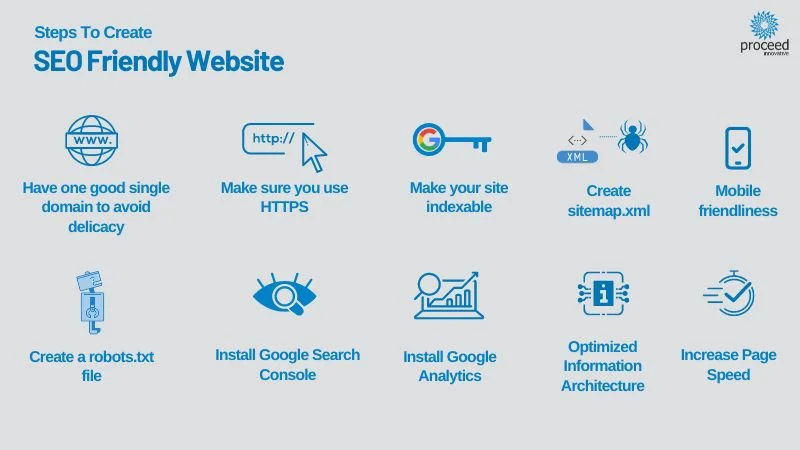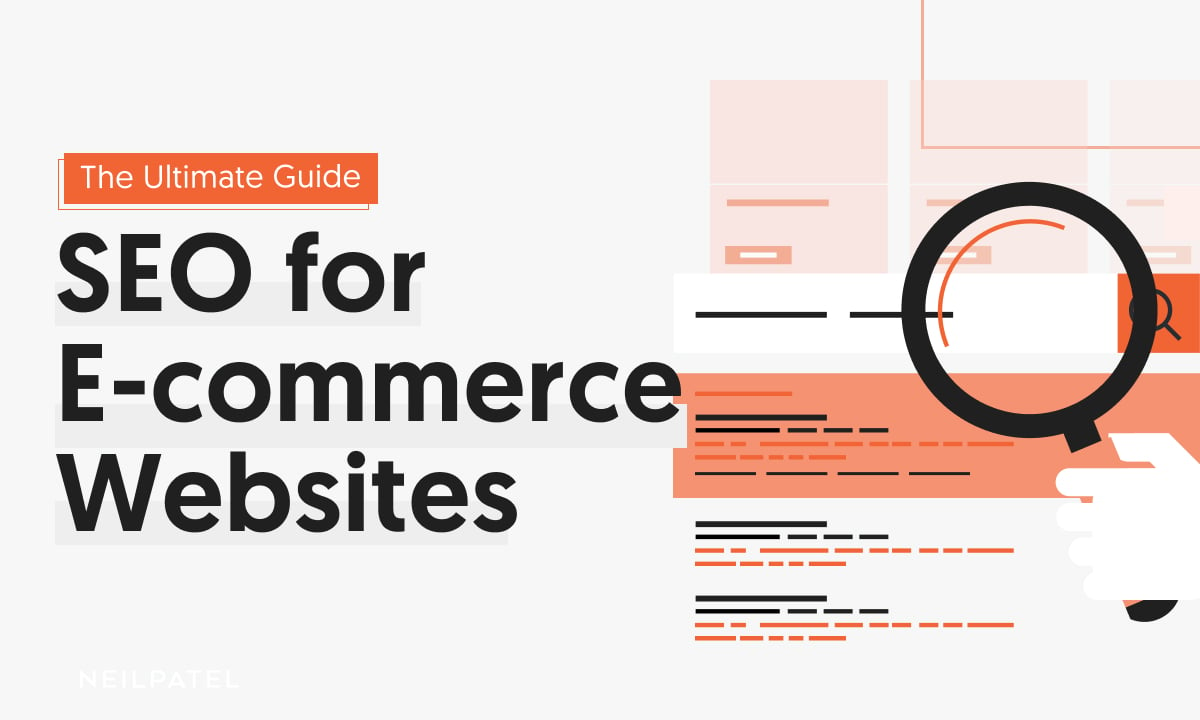
Seo Website: Boost Traffic with Proven Optimization Strategies
Are you struggling to get your website noticed online? Your website might look great, but if it doesn’t show up in search results, it’s like having a store with no customers.
That’s where SEO website strategies come in. By optimizing your site for search engines, you can attract more visitors, boost your credibility, and grow your business. Keep reading to discover simple, effective steps you can take right now to make your website work harder for you and stand out from the crowd.
Seo Basics
Understanding SEO basics is key for any website owner. SEO helps your site appear in search results. It improves your site’s visibility and brings more visitors. Learning the basics guides you to make better choices for your website.
How Search Engines Work
Search engines find and show web pages to users. They use bots called crawlers to explore the internet. Crawlers read content and follow links to other pages. All this data goes into a big index, like a library.
When someone searches, the engine checks its index. It looks for pages that match the search words. Then, it ranks these pages by relevance and quality. The top results appear first on the search page.
Key Seo Terms To Know
Keywords are words people type in search boxes. Using the right keywords helps your site get found. Meta tags give search engines info about your page. Title tags show the page title in search results.
Backlinks are links from other websites to yours. They build your site’s reputation and trust. On-page SEO means optimizing content and tags on your pages. Off-page SEO involves actions outside your site, like social sharing.
Keyword Research
Keyword research is the base of any strong SEO website strategy. It helps you find the words and phrases people type into search engines. Choosing the right keywords brings more visitors to your site. It also improves your site’s ranking on Google and other search engines.
Good keyword research saves time and effort. It guides your content creation and marketing plans. Understanding what your audience searches for is key to success.
Finding High-impact Keywords
High-impact keywords attract more traffic and potential customers. These keywords have a good balance of search volume and competition. Focus on keywords that many people search for but are not too hard to rank for. Use words that fit your niche and audience interests. This approach brings quality visitors who are interested in your content.
Using Keyword Tools
Keyword tools help you discover new keyword ideas. They show search volume and competition levels. Popular tools include Google Keyword Planner, Ubersuggest, and Ahrefs. These tools provide data to choose the best keywords. They also help track your keyword rankings over time. Using these tools makes keyword research easier and more accurate.
Long-tail Vs Short-tail Keywords
Short-tail keywords are short and broad. They get a lot of searches but have high competition. Long-tail keywords are longer and more specific. They attract fewer searches but have less competition. Long-tail keywords often bring visitors who want exact information. Using both types balances traffic volume and quality. This mix improves your chances of ranking well.
On-page Seo
On-Page SEO is the practice of optimizing individual web pages. It helps search engines understand your content better. It also improves user experience. This leads to higher rankings and more traffic. Small changes can make a big difference. Focus on key areas like titles, content, URLs, and links.
Optimizing Title Tags And Meta Descriptions
Title tags show the page topic to search engines and users. Keep titles under 60 characters for full display. Use main keywords naturally. Meta descriptions appear under titles in search results. Write clear descriptions that describe the page content. Keep them under 160 characters. Both elements increase click rates.
Improving Content Quality
Content should be useful and easy to read. Use short sentences and simple words. Answer common questions related to your topic. Include keywords but avoid stuffing. Add headings and bullet points to break text. Fresh and original content ranks better. Update old articles regularly to keep them relevant.
Url Structure Best Practices
URLs should be simple and descriptive. Use words that match the page content. Separate words with hyphens, not underscores. Keep URLs short but clear. Avoid using numbers or symbols. Clean URLs help search engines and users understand the page. Consistent URL structure improves site navigation.
Internal Linking Strategies
Internal links connect pages within your website. They guide visitors to related content. Use clear anchor text with relevant keywords. Link to important pages often to boost their authority. Avoid too many links on one page. Good internal linking helps search engines crawl your site. It also keeps users engaged longer.

Technical Seo
Technical SEO is the foundation for a well-performing website. It helps search engines crawl, index, and rank your site correctly. This part of SEO focuses on the backend structure and improves the user experience. A site that works smoothly keeps visitors engaged and improves your search rankings.
Boosting Site Speed
Fast-loading pages make visitors stay longer. Slow sites cause users to leave quickly. Optimize images, use caching, and reduce server response time. These steps help your pages load faster. Google also prefers sites that load quickly.
Mobile-friendly Design
More people use phones to browse the web. A mobile-friendly site fits any screen size. It should be easy to read and navigate on small devices. Responsive design adjusts layout automatically. This improves user experience and search rankings.
Fixing Crawl Errors
Crawl errors stop search engines from indexing your pages. These errors hurt your site’s visibility. Regularly check tools like Google Search Console. Fix broken links, missing pages, and server errors. A clean site map helps search engines find all pages.
Implementing Structured Data
Structured data adds extra information to your site code. It helps search engines understand your content better. This can improve how your pages appear in search results. Use schema markup for products, reviews, events, and more. Clear data boosts your site’s relevance.
Content Strategy
Content strategy is the heart of SEO for any website. It guides what content to create, how to present it, and when to update it. Strong content attracts visitors and keeps them engaged. It also helps search engines understand your site better.
Creating Valuable Content
Valuable content solves problems or answers questions for your audience. It should be clear, useful, and easy to read. Focus on topics your visitors care about. Use simple words and short sentences. This builds trust and encourages visitors to return.
Content Types That Drive Traffic
Different content types attract different visitors. Blog posts provide detailed information. Lists and how-to guides are easy to scan and follow. Videos and infographics explain ideas quickly. Use a mix to reach a wider audience and keep them interested.
Updating Existing Content
Refreshing old content improves SEO and user experience. Check your posts regularly for accuracy. Add new information or fix outdated facts. Updating content helps maintain good rankings and keeps visitors informed.
Link Building
Link building is a key part of SEO websites. It helps improve your site’s authority and rank on search engines. Quality links from other websites tell search engines your content is valuable. Building links takes time and smart effort. Focus on earning links that bring real value to your site.
Earning Quality Backlinks
Quality backlinks come from trusted websites in your niche. Reach out to bloggers, news sites, and industry experts. Create useful content that others want to share. Infographics, guides, and original research attract more links. Avoid low-quality sites that can harm your ranking.
Guest Posting Tips
Guest posting allows you to share content on other websites. Choose sites with good reputation and related topics. Write clear, helpful articles that fit their audience. Include a natural link back to your site. Avoid overloading posts with links. Focus on building relationships with site owners.
Avoiding Black Hat Techniques
Black hat techniques can cause penalties from search engines. Do not buy links or join link farms. Avoid hidden links and keyword stuffing. These tactics may bring quick results but hurt your site long-term. Always follow search engine guidelines. Build links honestly and patiently for lasting success.
Local Seo
Local SEO helps small businesses reach nearby customers. It improves visibility in local search results. This is important for stores, restaurants, and service providers. Local SEO boosts foot traffic and online visits. It focuses on location-specific strategies to connect with the community.
Optimizing Google My Business
Google My Business (GMB) is essential for local SEO. Complete your profile with accurate details. Add your business name, address, phone number, and hours. Upload clear photos to attract attention. Keep your information updated to build trust. Use GMB posts to share news and offers.
Local Citations
Local citations are online mentions of your business. They include your name, address, and phone number. Consistent citations improve your local search rankings. List your business on trusted directories and websites. Check for errors and fix them quickly. Local citations increase your business’s credibility.
Encouraging Customer Reviews
Customer reviews influence local search rankings and buying decisions. Ask happy customers to leave honest reviews. Respond to reviews promptly and politely. Positive reviews build trust and attract new clients. Manage negative feedback with care and professionalism. Reviews show your business is active and customer-focused.

Measuring Seo Success
Measuring SEO success helps you know if your efforts bring results. It shows what works and what needs change. Tracking key metrics guides your SEO growth. Data-driven decisions improve your website’s performance and visibility.
Tracking Traffic And Rankings
Watch the number of visitors your website gets. More visitors often mean better SEO. Check your site’s position in search results. Higher rankings bring more clicks and potential customers. Track which keywords drive traffic to your pages.
Using Google Analytics
Google Analytics provides detailed website data. It shows visitor behavior and traffic sources. Learn which pages keep visitors longer. Identify bounce rates and exit points. Use this data to understand user interaction on your site.
Adjusting Strategies Based On Data
Use data insights to refine your SEO plan. Focus on keywords that bring more traffic. Improve or remove low-performing content. Test different approaches and track results. Constant adjustments keep your SEO efforts effective.

Frequently Asked Questions
What Is Seo For A Website?
SEO for a website means optimizing its content and structure. It helps improve visibility on search engines. This drives organic traffic and enhances user experience. SEO uses keywords, meta tags, and backlinks to rank higher.
How Does Seo Improve Website Ranking?
SEO improves ranking by making your site relevant and trustworthy. It involves keyword optimization, quality content, and fast loading speeds. Search engines reward well-optimized sites with better positions. This increases organic traffic and brand credibility.
Why Is Seo Important For Website Success?
SEO is crucial because it boosts online visibility and traffic. It helps attract targeted users actively searching for your services. Good SEO increases conversions and builds long-term audience trust. Without SEO, websites may remain unnoticed.
How Long Does Seo Take To Show Results?
SEO results usually appear within 3 to 6 months. It depends on competition, keywords, and website quality. Consistent efforts and updates speed up progress. Patience and strategy are key for lasting SEO success.
Conclusion
SEO helps your website get found by more people online. Using the right keywords and clear content makes a big difference. Keep your site fast, easy to use, and mobile-friendly. Regular updates keep your site fresh and trusted by search engines.
Small steps every day improve your website’s visibility. SEO is a tool anyone can use to grow their audience. Stay patient and consistent, and results will follow. Simple changes can lead to steady growth over time.



